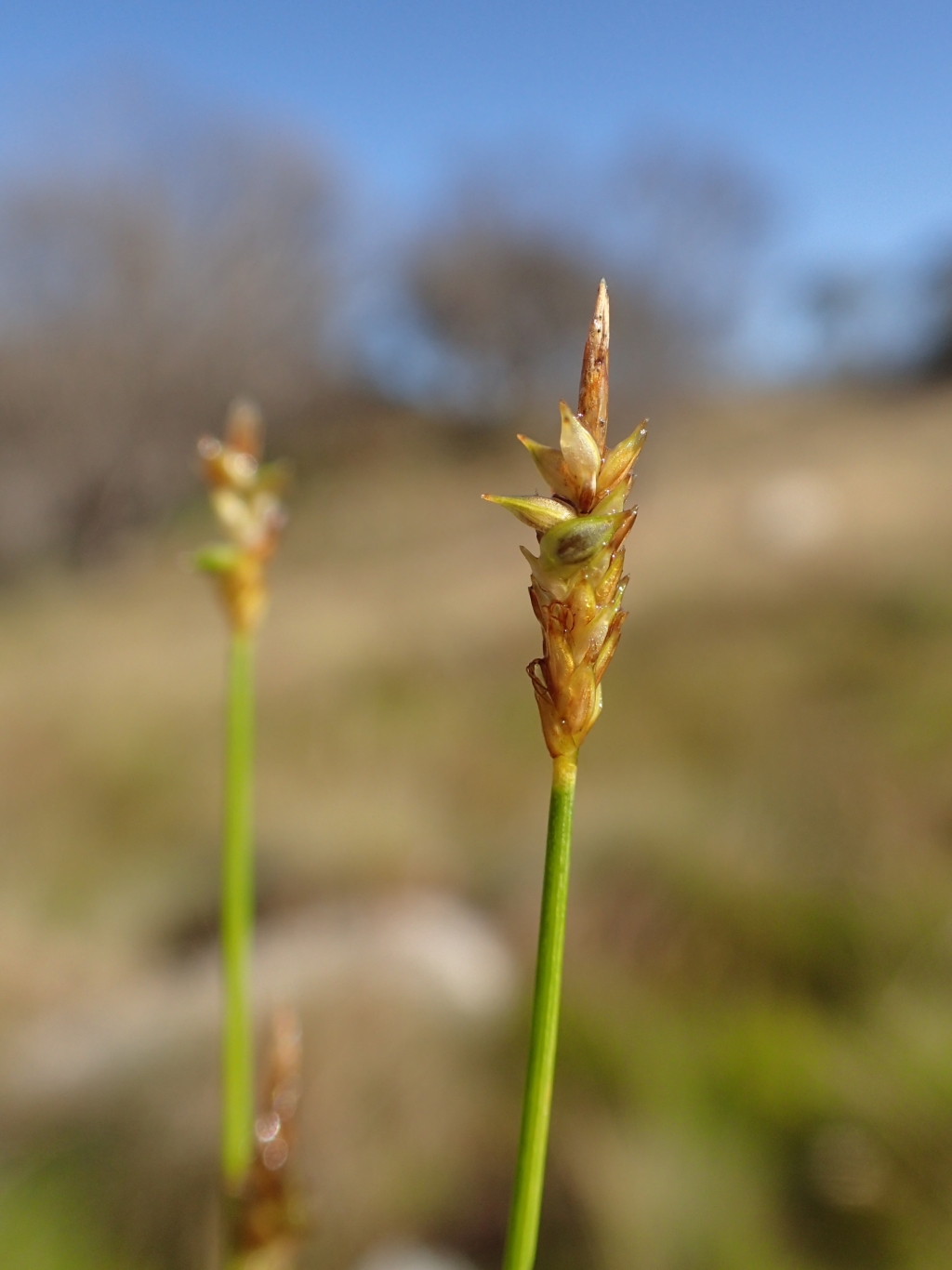Carex capillacea
Boott Hair SedgeRhizome short; shoots densely tufted. Culms erect, slender, terete to trigonous, smooth, 3–15(–30) cm long, c. 0.5 mm diam. Leaves usually shorter than culms, c. 0.5 mm wide; sheath green to pale brown; ligule obtuse. Inflorescence erect, 0.5–1 cm long, with 1 spike; lowest involucral bract shorter than inflorescence. Spike with male portion above and as long as female portion; glumes obtuse, orange-brown; female glumes 1.3–2 mm long; utricles 1.8–2.4 mm long, c. 1 mm diam., ovoid, strongly nerved, glabrous, pale brown, sometimes red-dotted; beak 0.2–0.5 mm long, with apex notched; style 3-fid. Nut ovoid, trigonous, pale brown, occasionally red-dotted. Flowers summer.
EGU, HNF, VAlp. Also NSW, ACT, Tas. New Zealand, Asia to India. Scattered in alpine areas, bordering high-altitude swamps and wet alpine heathlands, usually associated with Sphagnum moss, but rather uncommon (e.g. at Snowy Range, Bogong High Plains, Nunniong Plateau, Davies Plain, Cobberas).
Inflorescence a single spike as in Carex cephalotes and C. archeri, but the inflorescence more slender, with a longer male portion than in either of those species.
Carex capillacea has in the past sometimes being treated as Carex rara subsp. capillacea. Nelmes (1951) considered C. capillacea to be distinct from C. rara, noting that the Australian and New Zealand plants match those from India closely.
Wilson, K.L. (1994). Cyperaceae. In: Walsh, N.G.; Entwisle, T.J., Flora of Victoria Vol. 2, Ferns and Allied Plants, Conifers and Monocotyledons, pp. 238–356. Inkata Press, Melbourne.
 Spinning
SpinningNelmes, E. (1951). The genus Carex in Malaysia. Reinwardtia 1(3): 221–450.


